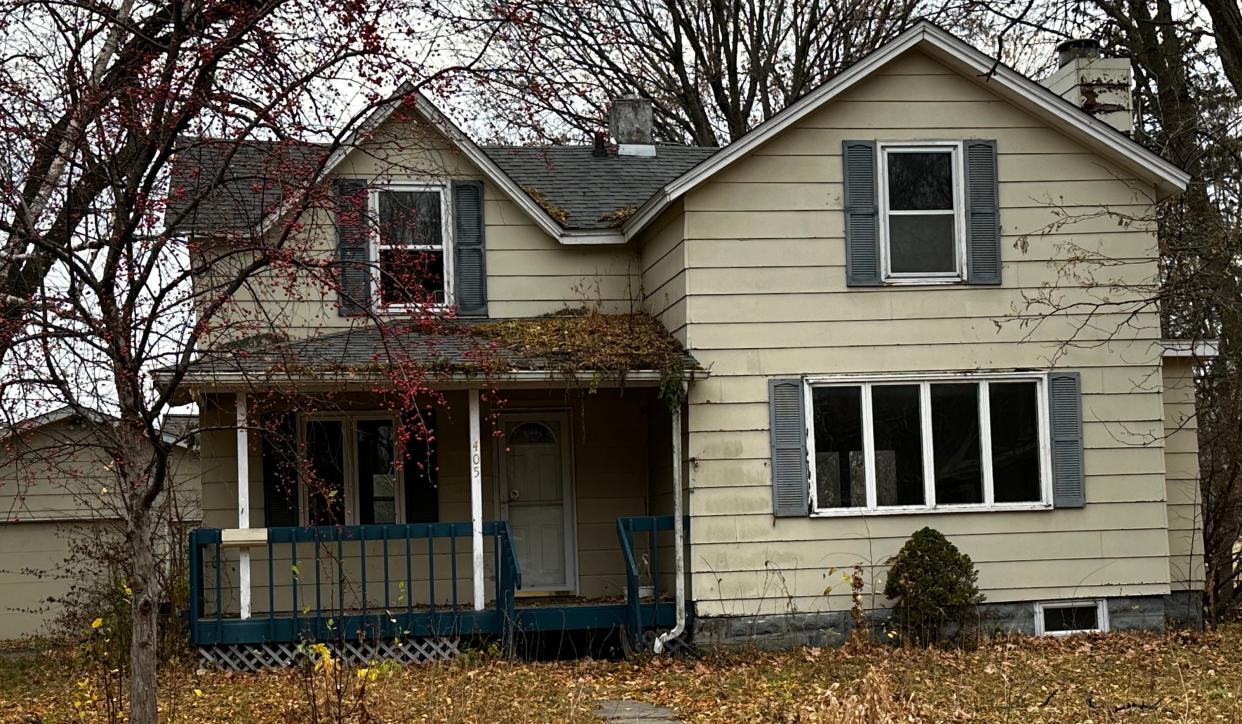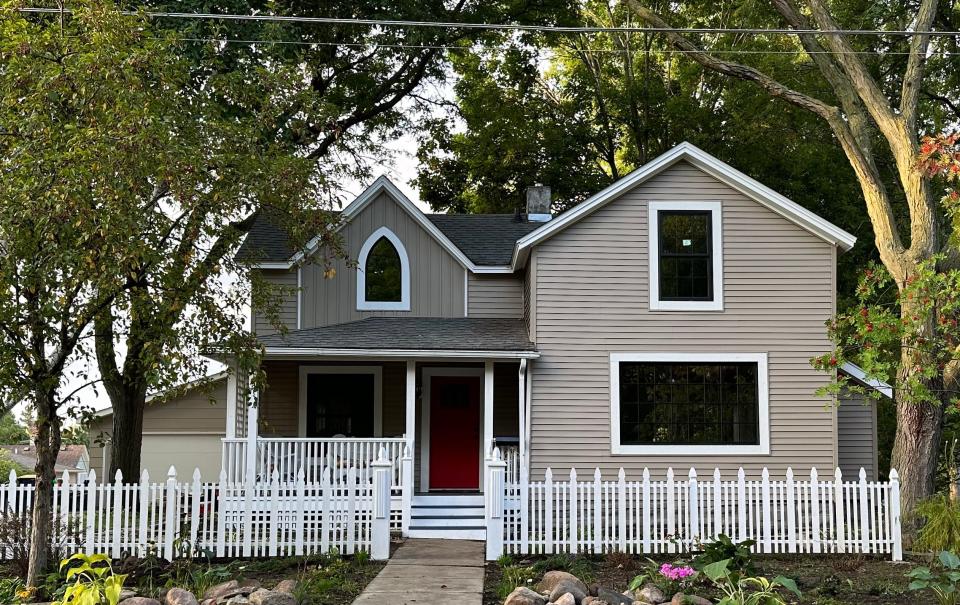A community unites to help with housing, one family at a time | At Home with Marni


And this week's column is a ray of sunshine piercing through the newspaper’s grim reports of war, crime, and political mayhem. You’re welcome.
The story takes place in Northfield, Minnesota, a small town with a big heart, and home to the Hernandez family.
Victor and Lorena Hernandez (whose names I’ve changed for privacy) came to the United States from Mexico 20 years ago while still teenagers. They then met, married, and had three children, overcoming language, immigration, and citizenship barriers along the way. For two decades they have worked hard and paid taxes. Victor works in manufacturing and does landscaping on the side. Lorena cleans houses. They both provide janitorial services for the local parish.
Their hard-earned money goes to support their immediate family, their extended family in Mexico, and to pay rent for a rundown two-bedroom apartment. For them the American dream of owning a home remained just that – a dream.
That changed when the priest at their parish introduced them to Bob Thacker and Karen Cherewatuk. The couple, also of Northfield, had long been concerned about the lack of affordable housing in their area, but weren’t sure how they could help.
As they came to know Victor and Lorena, they got to thinking, maybe they couldn’t solve the housing crisis, but they could help one deserving family own a home.
They began looking for an inexpensive house to renovate, but the houses in Northfield start at $300,000. Then, while out on a bike ride, they came across an abandoned, falling-down house that had been vacant for two years. They contacted the owner, an elderly woman who had moved out and into a condo because the house had become too much for her.
When Bob and Karen told her of their desire to renovate the house to help a family, not for any financial profit, she gladly sold them the classic Midwest American farmhouse, circa 1890, for $80,000.
Bob, Karen, Victor, and Lorena got to work. Soon many community members joined them. “We filled eight dumpsters just cleaning the property up,” Bob said. Ultimately, he and Karen put another $110,000 of their personal money into the three-bedroom home, with the understanding the Hernandezes would get financing and pay them back. The value of the donations and free labor that poured into the nonprofit charity they worked with easily surpassed their contribution.
“I felt like Tom Sawyer painting the fence,” Bob said. “Everyone who came along thought pitching in would be a great idea.” Nobody worked harder than the Hernandezes, including their kids.
Last Labor Day, after eight months of renovating, the Hernandez family moved in. “We had a fiesta and thanked everyone who worked on the house,” Bob said. “Over 150 people came, including the local priest who blessed the house and each room inside.”
Victor addressed the crowd in tears, thanking everyone for making possible a dream he never thought could come true, a home for his children and grandchildren.
“The house wasn’t a charity project,” Bob said. “It was a leg-up project. Everyone knew the couple was going to buy the house.” They simply built the bridge between impossible and possible.
For now, the Hernandezes make monthly payments to Bob and Karen, with all payments going directly against principal. When interest rates come down, they will take out a bank loan, which they’ve been approved for, and pay off the note.
“When the money comes back to us, we want to do this again,” Bob said.
If your heart isn’t warmed now, check your pulse.
Bob’s hope is that others might be inspired to repeat the model in their communities. Here’s the formula:
· Get good guidance. Bob knew the woman who ran the local Habitat for Humanity and sought her advice. Although The Starfish House (as they named it) is similar to a Habitat for Humanity house in that both models help families realize affordable housing, which the future owners help build, Habitat homes are typically new construction, while the Starfish model renovates existing houses. “Habitat has this down to a science, and were a great resource,” Bob said. Other professionals also consulted. Three bankers offered free financial advice. A lawyer offered free legal counsel, and a local architect assessed the house, offering ways to make it more secure at no charge.
· Tap the community. For construction help, Bob asked and quickly found talented framers, drywallers, and carpenters, some retired, who wanted to be part of something special. All told, nearly 100 local residents volunteered to help with demolition, carpentry, painting, and gardening. Two carpenters built a new front porch. A talented kitchen and bathroom designer helped with both those areas.
· Watch for finds. The Starfish team scoured the streets and curbs for useful castoffs. “We became consummate dumpster divers,” Bob said. They trolled Facebook Marketplace, where they found someone offering free patio stones if you dug them up and hauled them away, which Victor did, then used the stones to build a patio and wall. If they couldn’t find free, they found frugal. They got deals at a builder outlet that sold items, such as doors, cabinets, and sinks, that contractors return unused. Bob bought a large Andersen window that sells for several thousand dollars for $145. It’s now the home’s front window. They found all the home’s light fixtures at a Habitat for Humanity ReStore, which sells donated home improvement materials and furnishings.
· Solicit donations. By simply asking, Bob also got a plumbing company to donate plumbing supplies, fixtures, and HVAC updates. An electrical company offered them new wiring at cost. Generous neighbors pooled funds to replace appliances. “I can’t explain the spirit of service and serendipity,” he said. “The minute we hit an impasse and asked, ‘How are we going to do this?’ Someone stepped forward. It speaks to the inherent goodness of people.”
Told you this column would make you feel better.
Marni Jameson is the author the forthcoming “Rightsize Today to Create Your Best Life Tomorrow: A Motivational Guide for Those Seeking Their Ideal Home Later in Life” due out Jan. 2, and six more home and lifestyle books, including “What to Do With Everything You Own to Leave the Legacy You Want” and “Downsizing the Family Home – What to Save, What to Let Go.” You may reach her at marnijameson.com.
This article originally appeared on Sarasota Herald-Tribune: MARNI JAMESON: A town comes together to help with affordable housing

